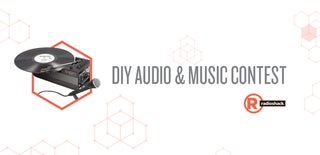Introduction: Paper Speakers
This project explores the technical, design, and aesthetic possibilities of 2-D, flexible audio speaker technology. The premise underlying this exploration is the idea that sound can be thought of as a physically immediate, transparent and embodied material. The end goal for me is the use of this material for my art practice: Sound Art, Installation, and Composition. This project includes not just research but also finished art pieces.
Step 1: How to Build a Paper Speaker
Step 2: Some Topologies to Explore for Your Paper Speaker
This figure shows the three basic topologies of circuit design for
paper speakers which I have explored. All three designs can generate a magnetic field capable of driving audio.
Spiral. Spiral designs are probably the most effective at driving audio, everything else being equal. However, spiral design has serious drawbacks: Only one circuit can be created. Once the signal arrives at the end of the spiral, the only effective way to continue with any serial connection would be to break away from the plane, or break into the surface of the plane.
Parallel. By using an open C like structure, rather than a closed spiral loop, it becomes possible to overcome the limitations of the Spiral pattern, in so far as serial connections within the plane can be achieved. The parallel structure also has the benefit, as can be seen in the acoustic drawing, of being highly flexible for expressive effect and figuration, etc.
Sparse. The sparse topology is actually either a spiral or parallel structure in disguise. Any kind of texture can be used to create such a structure by strategically breaking connections within the texture so that current will flow in a desired path. The benefits of a sparse topology are that the actual path of the circuitry can be completely hidden, freeing the surface from specific technical constraints. However, the sparse topology is likely the least effective of the three designs here, since the flow of current would be necessarily inexact.
Step 3: Some Examples of My Paper Speakers
Step 4: An Alternative Way to Make Paper Speakers Using Visual Images
It is also possible to explore photographic material as a basis for flat
audio circuitry design. Using commonly available rubberized ferrite magnetic sheets with a circuitry design maximized to respond to the vagaries of the anisotropic ferrite deposition on the flexible magnetic sheet, photographic half-tone strategies can be employed on the surface, such as in this audio speaker/image of William Burroughs
Step 5: Video of Some Working Speakers
I made some really large tapestries of these paper speakers (actually, these ones are on acetate not paper). I wrote some music for them . . Here they are at the Berkeley Art Museum

Second Prize in the
DIY Audio and Music Contest









